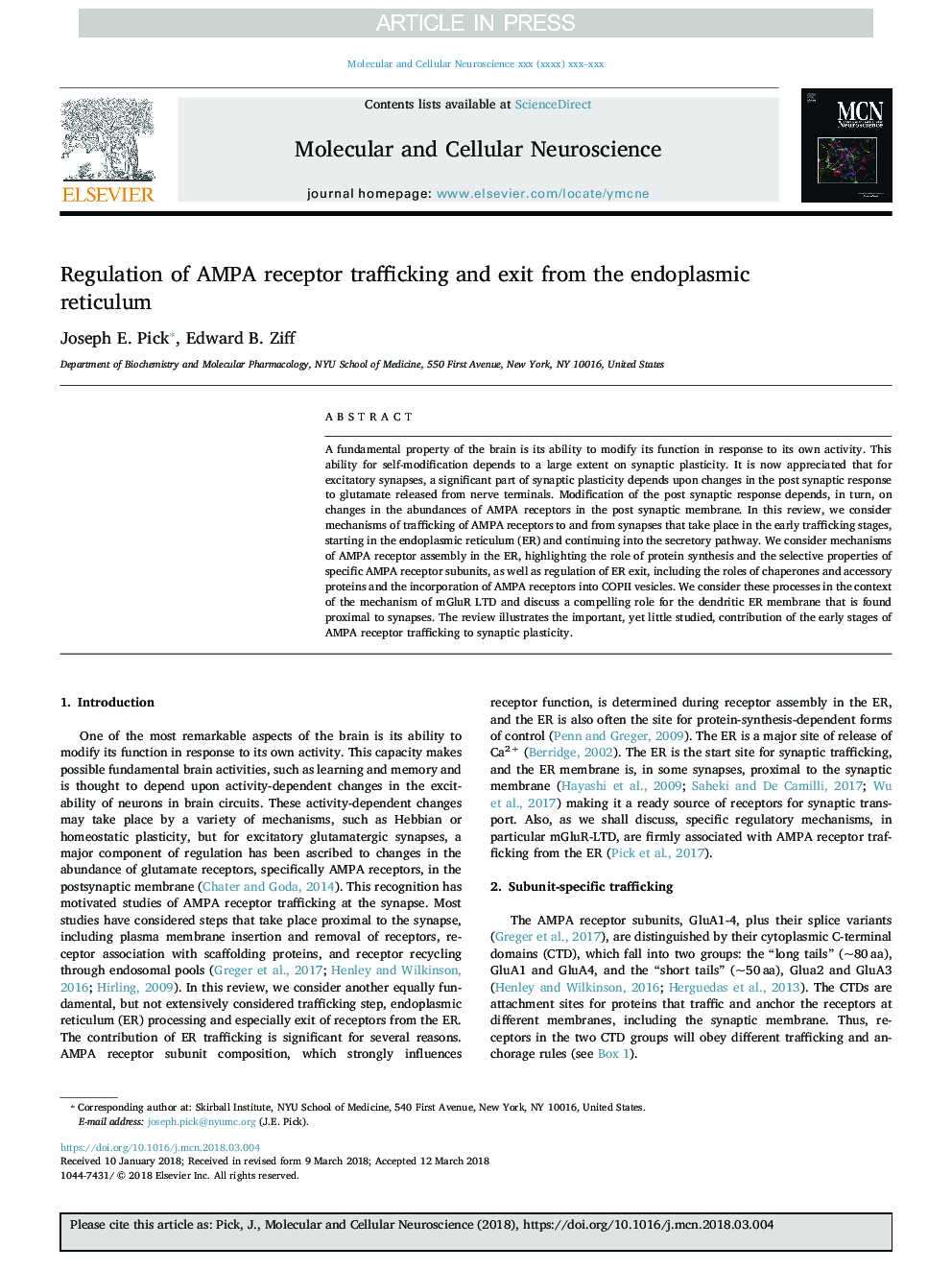| Article ID | Journal | Published Year | Pages | File Type |
|---|---|---|---|---|
| 8962257 | Molecular and Cellular Neuroscience | 2018 | 7 Pages |
Abstract
A fundamental property of the brain is its ability to modify its function in response to its own activity. This ability for self-modification depends to a large extent on synaptic plasticity. It is now appreciated that for excitatory synapses, a significant part of synaptic plasticity depends upon changes in the post synaptic response to glutamate released from nerve terminals. Modification of the post synaptic response depends, in turn, on changes in the abundances of AMPA receptors in the post synaptic membrane. In this review, we consider mechanisms of trafficking of AMPA receptors to and from synapses that take place in the early trafficking stages, starting in the endoplasmic reticulum (ER) and continuing into the secretory pathway. We consider mechanisms of AMPA receptor assembly in the ER, highlighting the role of protein synthesis and the selective properties of specific AMPA receptor subunits, as well as regulation of ER exit, including the roles of chaperones and accessory proteins and the incorporation of AMPA receptors into COPII vesicles. We consider these processes in the context of the mechanism of mGluR LTD and discuss a compelling role for the dendritic ER membrane that is found proximal to synapses. The review illustrates the important, yet little studied, contribution of the early stages of AMPA receptor trafficking to synaptic plasticity.
Related Topics
Life Sciences
Biochemistry, Genetics and Molecular Biology
Cell Biology
Authors
Joseph E. Pick, Edward B. Ziff,
